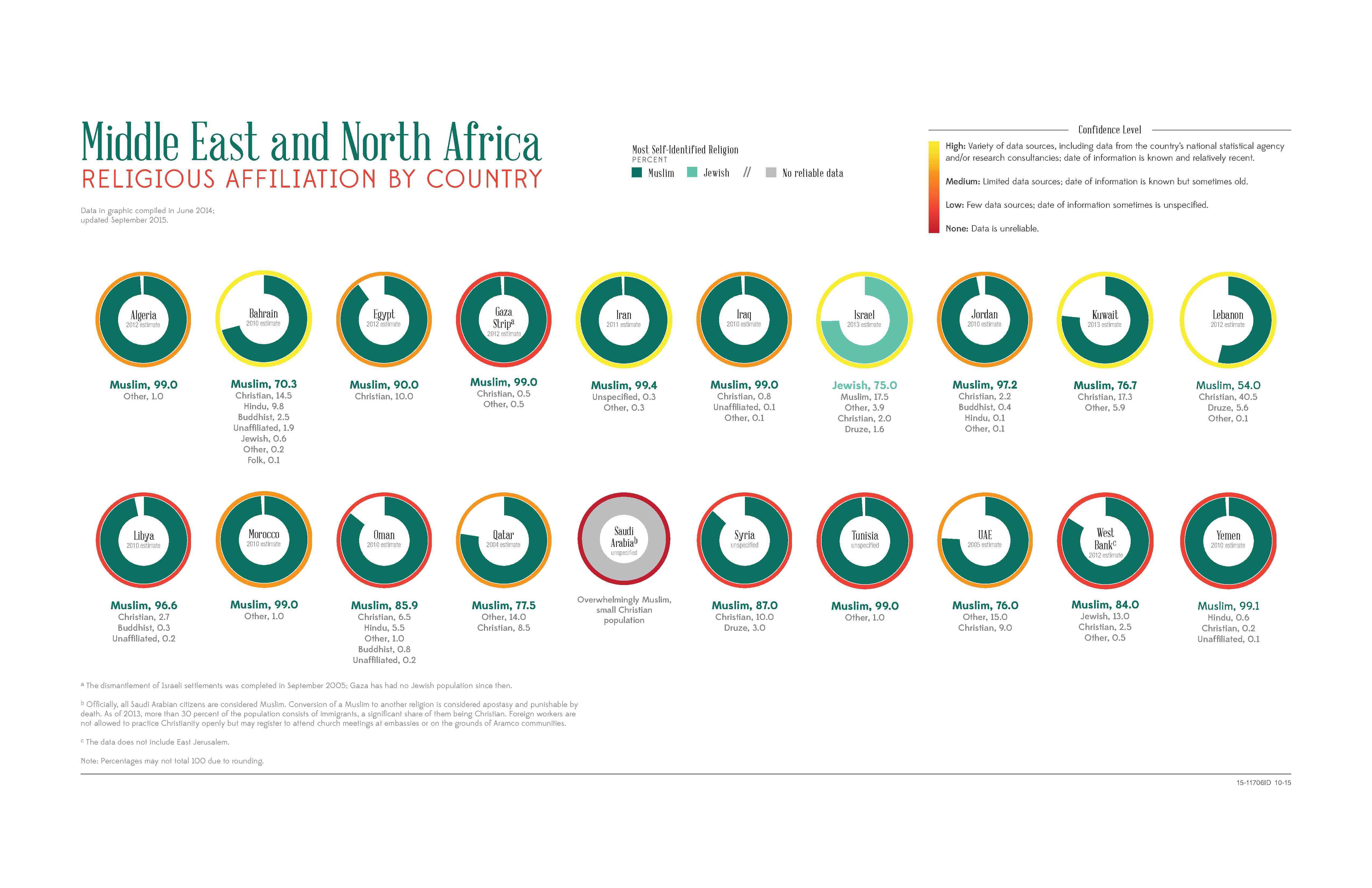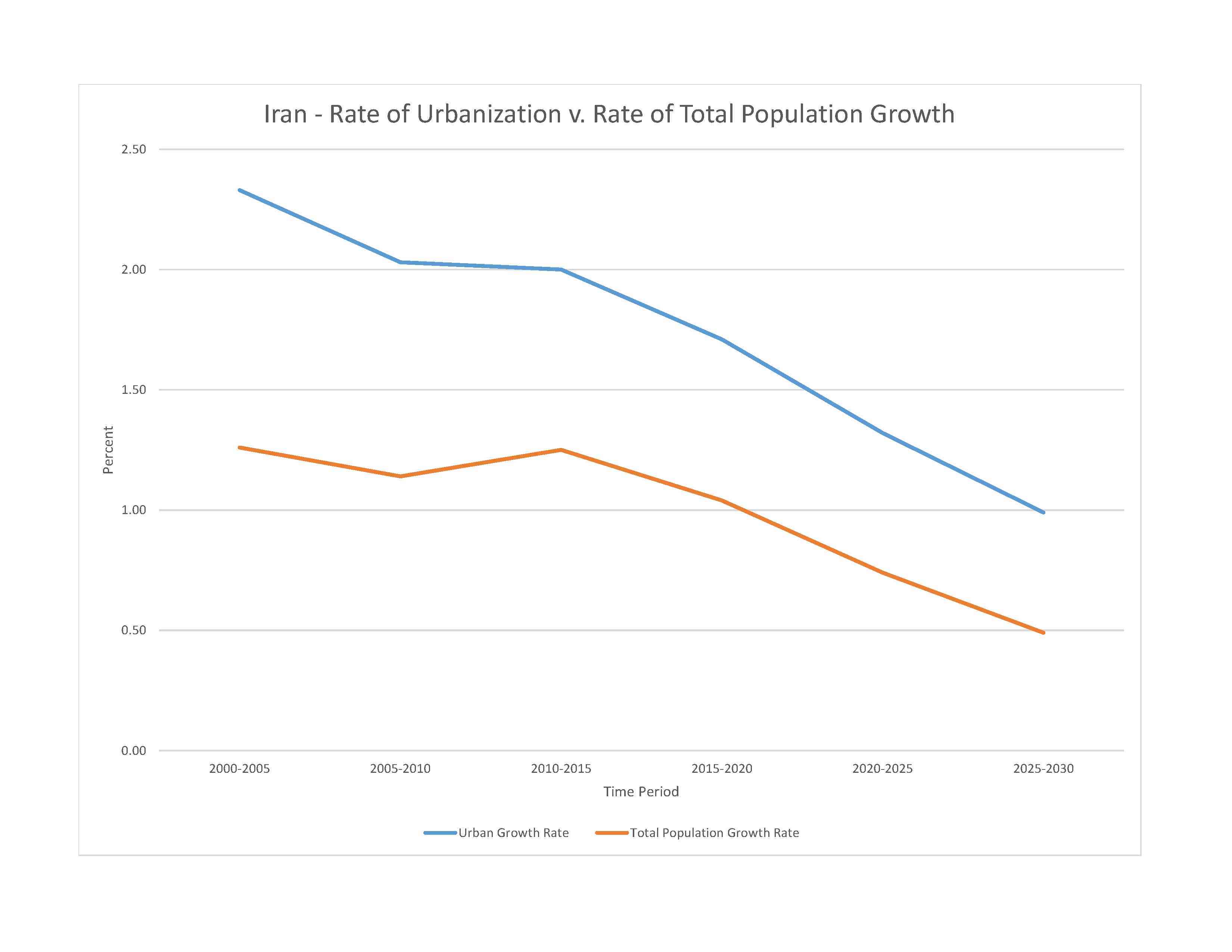
87,590,873 (2023 est.)
noun: Iranian(s)
adjective: Iranian
Persian, Azeri, Kurd, Lur, Baloch, Arab, Turkmen, and Turkic tribes
Persian Farsi (official), Azeri and other Turkic dialects, Kurdish, Gilaki and Mazandarani, Luri, Balochi, Arabic
major-language sample(s):
چکیده نامه جهان، منبعی ضروری برای کسب اطلاعات کلی جهان (Persian)
The World Factbook, the indispensable source for basic information.
Persian audio sample:
Muslim (official) 98.5%, Christian 0.7%, Baha'i 0.3%, agnostic 0.3%, other (includes Zoroastrian, Jewish, Hindu) 0.2% (2020 est.)

0-14 years: 23.51% (male 10,533,573/female 10,060,225)
15-64 years: 69.82% (male 31,140,117/female 30,014,613)
65 years and over: 6.67% (2023 est.) (male 2,723,298/female 3,119,047)
total dependency ratio: 45.3
youth dependency ratio: 34.6
elderly dependency ratio: 10.7
potential support ratio: 9.3 (2021 est.)
total: 33.3 years (2023 est.)
male: 33.1 years
female: 33.5 years
0.93% (2023 est.)
14.8 births/1,000 population (2023 est.)
5.2 deaths/1,000 population (2023 est.)
-0.3 migrant(s)/1,000 population (2023 est.)
population is concentrated in the north, northwest, and west, reflecting the position of the Zagros and Elburz Mountains; the vast dry areas in the center and eastern parts of the country, around the deserts of the Dasht-e Kavir and Dasht-e Lut, have a much lower population density
urban population: 77.3% of total population (2023)
rate of urbanization: 1.32% annual rate of change (2020-25 est.)

9.500 million TEHRAN (capital), 3.368 million Mashhad, 2.258 million Esfahan, 1.721 million Shiraz, 1.661 million Tabriz, 1.594 million Karaj (2023)
at birth: 1.05 male(s)/female
0-14 years: 1.05 male(s)/female
15-64 years: 1.04 male(s)/female
65 years and over: 0.87 male(s)/female
total population: 1.03 male(s)/female (2023 est.)
22 deaths/100,000 live births (2020 est.)
total: 14.6 deaths/1,000 live births (2023 est.)
male: 15.7 deaths/1,000 live births
female: 13.4 deaths/1,000 live births
total population: 75.4 years (2023 est.)
male: 74.1 years
female: 76.9 years
1.92 children born/woman (2023 est.)
0.94 (2023 est.)
N/A
improved: urban: 99.8% of population
rural: 98.1% of population
total: 99.4% of population
unimproved: urban: 0.2% of population
rural: 1.9% of population
total: 0.6% of population (2020 est.)
5.3% of GDP (2020)
1.58 physicians/1,000 population (2018)
1.6 beds/1,000 population (2017)
improved: urban: 100% of population
rural: 100% of population
total: 100% of population
unimproved: urban: 0% of population (2015 est.)
rural: 0% of population
total: 0% of population (2020 est.)
degree of risk: intermediate (2023)
food or waterborne diseases: bacterial diarrhea
vectorborne diseases: Crimean-Congo hemorrhagic fever
25.8% (2016)
total: 0.02 liters of pure alcohol (2019 est.)
beer: 0 liters of pure alcohol (2019 est.)
wine: 0 liters of pure alcohol (2019 est.)
spirits: 0.02 liters of pure alcohol (2019 est.)
other alcohols: 0 liters of pure alcohol (2019 est.)
total: 13.6% (2020 est.)
male: 24.1% (2020 est.)
female: 3.1% (2020 est.)
4.3% (2017)
70.3% (2023 est.)
3.6% of GDP (2020 est.)
definition: age 15 and over can read and write
total population: 88.7%
male: 92.4%
female: 88.7% (2021)
total: 15 years
male: 15 years
female: 15 years (2020)
NOTE: The information regarding Iran on this page is re-published from the 2024 World Fact Book of the United States Central Intelligence Agency and other sources. No claims are made regarding the accuracy of Iran 2024 information contained here. All suggestions for corrections of any errors about Iran 2024 should be addressed to the CIA or the source cited on each page.
This page was last modified 04 May 24, Copyright © 2024 ITA all rights reserved.